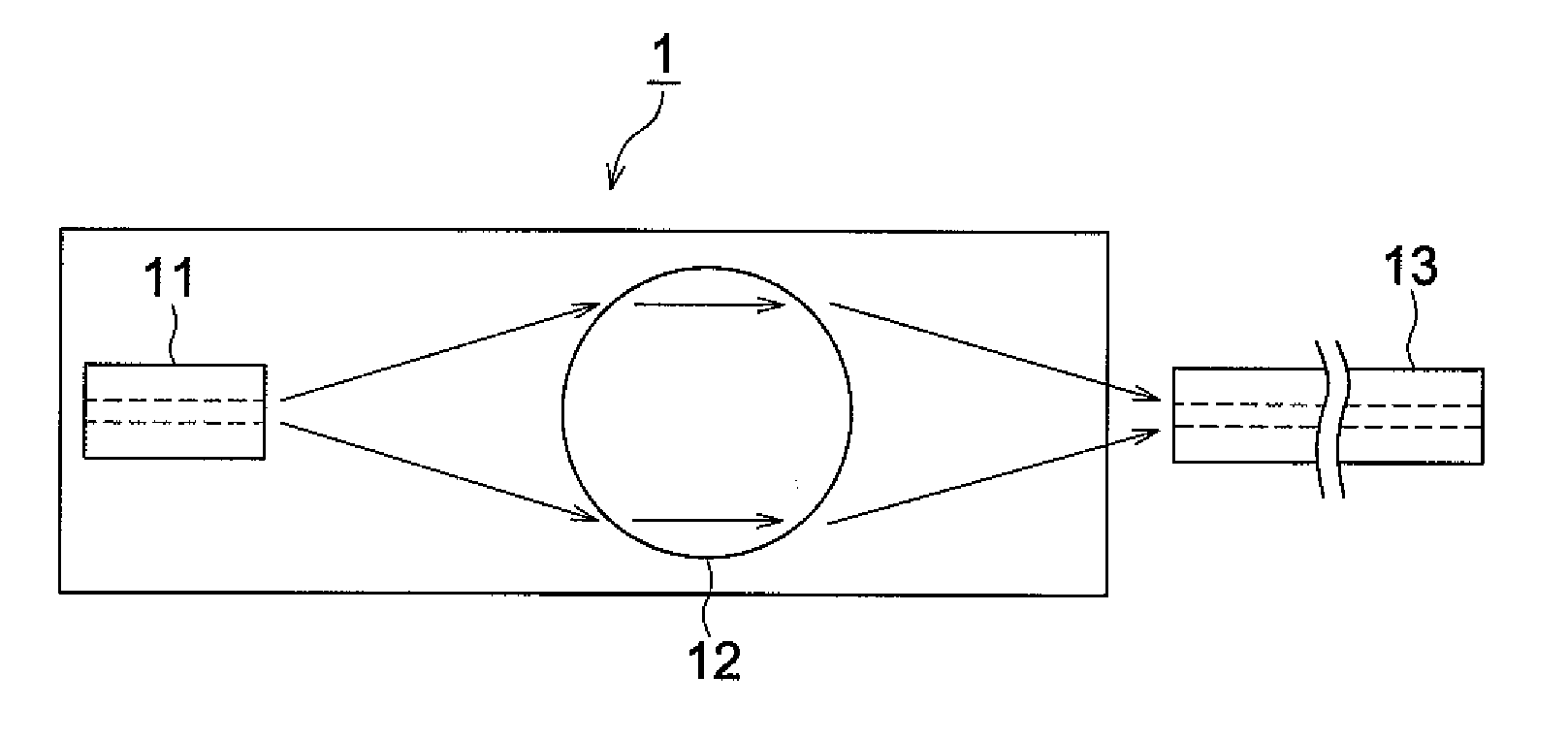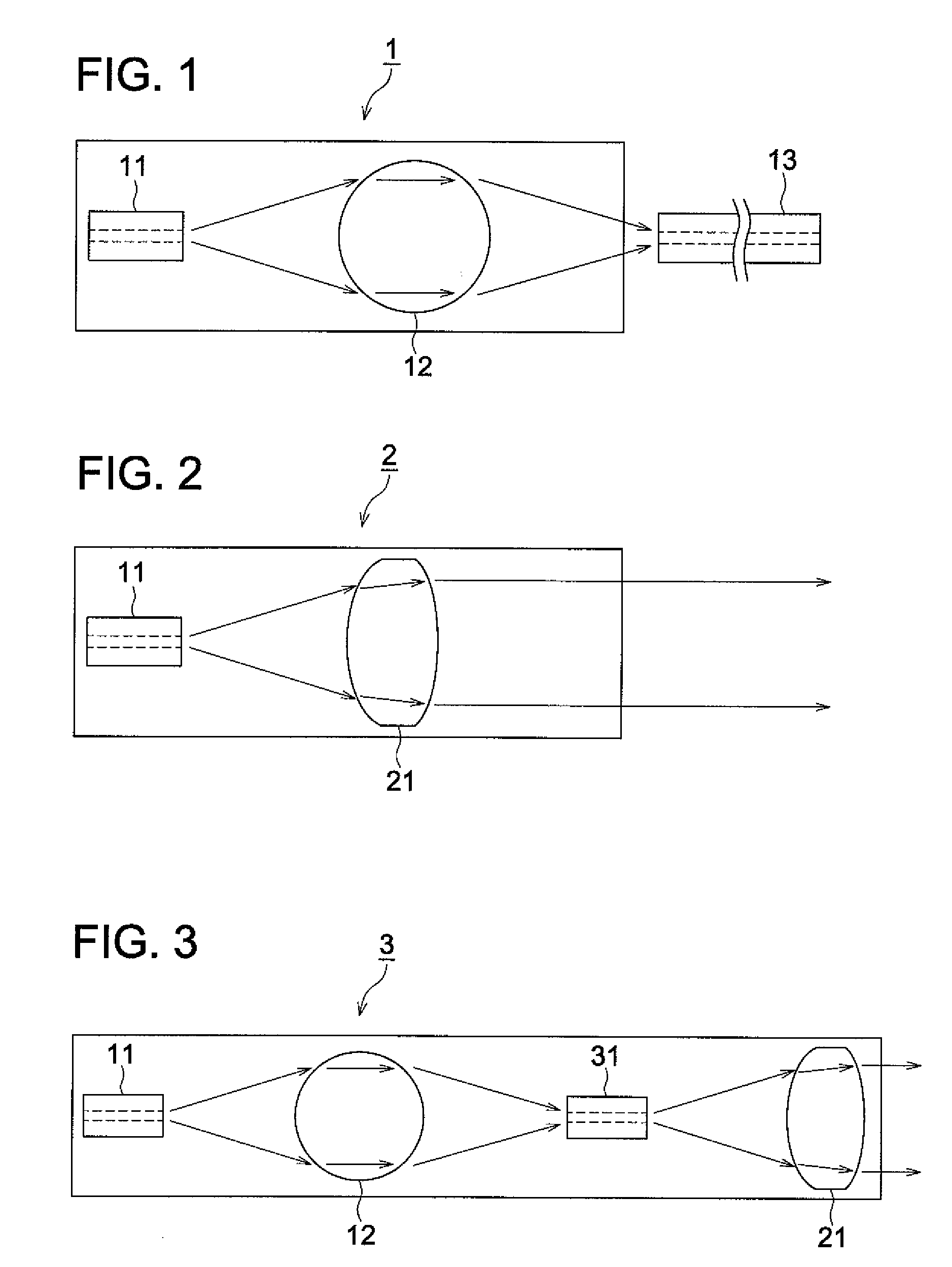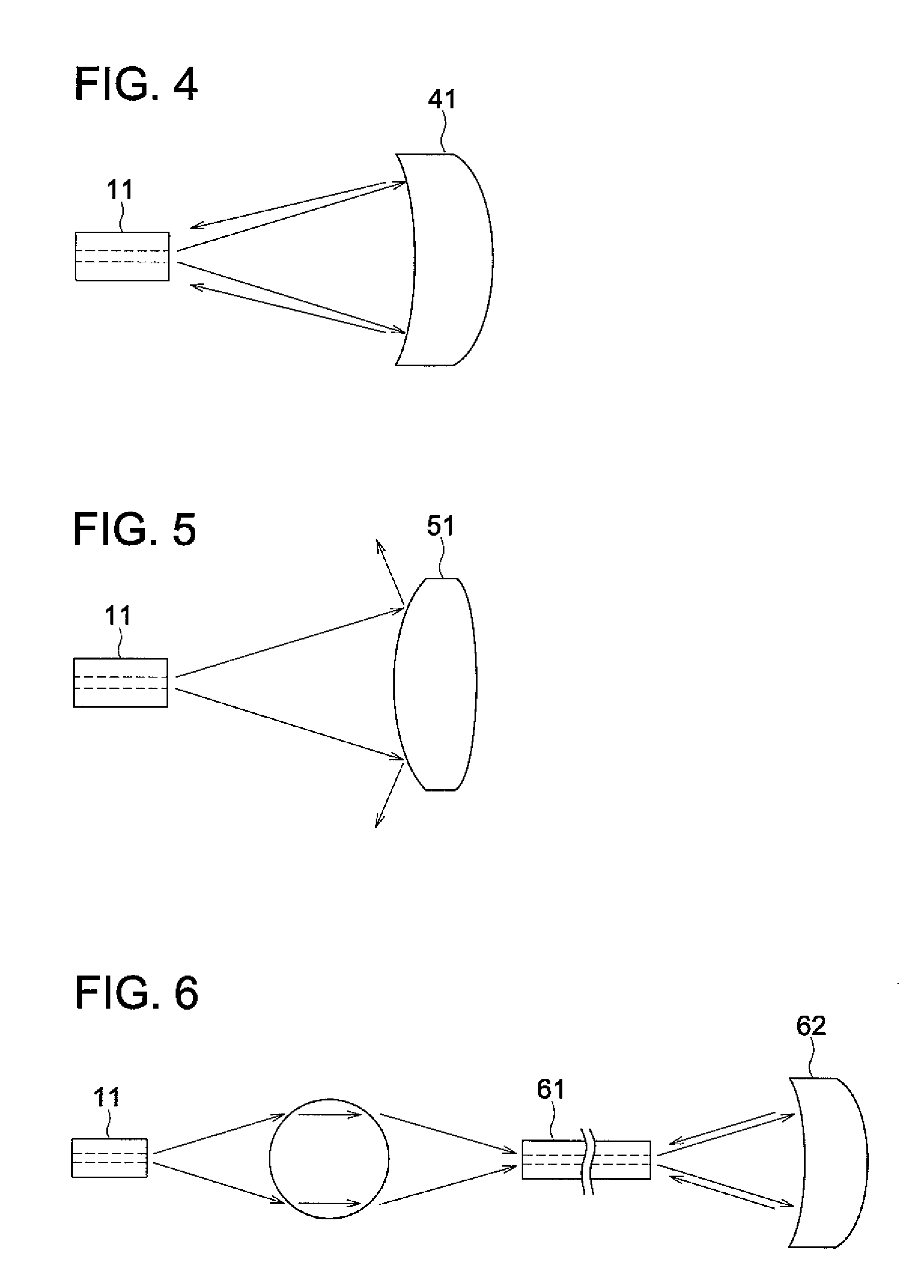Optical Module and Optical Unit
- Summary
- Abstract
- Description
- Claims
- Application Information
AI Technical Summary
Benefits of technology
Problems solved by technology
Method used
Image
Examples
example 1
[0060]The first Example will be described. This Example represents the embodiment applicable to all of the above-mentioned first through fifth embodiments. The values shown in the optical system specification data 1 are used to represent the specifications of the optical system. The wavelength of the semiconductor laser is 1.31 μm that is used in the optical communication service. The radius in the light source mode of the optical fiber outgoing aperture is 2 μm. For example, it is possible to assume the case wherein the light emanating from the optical fiber is reflected by the optical surface of the first lens and is fed back to the optical fiber. In such a case, a collimating lens was designed to get the design result shown in the paraxial data 1 and Korenich coefficient / aspherical coefficient data 1. Here, E represents a power of ten. For example, 3.0E−01 represents 0.3. The sag Z (h) of the aspherical shape of such a lens can be expressed by the following Mathematical Formula 1...
example 2
[0071]The following describes the second Example. This Example represents the embodiment applicable to all of the above-mentioned first through fifth embodiments. For example, it is possible to assume the case wherein the light emanating from the semiconductor laser is reflected by the optical surface of the first lens and is fed back to the optical fiber. The values shown in the optical system specification data 1 are used to represent the specifications of the optical system. When “Z” is assumed to represent the traveling direction of light, the mode radius in the outgoing aperture is 2 μm in the direction X, and 3 μm in the direction Y. In the semiconductor laser, the light confinement effects are different between the directions X and Y. Thus, the mode radiuses are also different between the directions X and Y. The wavelength of the light source is 1.06 μm. In such a case, a collimating lens was designed to get the design result shown in the paraxial data 2 and Korenich coeffici...
example 3
[0076]The following describes the third Example. This Example represents the embodiment applicable to all of the above-mentioned first through fifth embodiments. The values shown in the optical system specification data 3 are used to represent the specifications of the optical system. The wavelength of the light source is 1.31 μm that is used in optical communication services. The mode radius of the optical fiber outgoing aperture is 10 μm. For example, it is possible to assume the case wherein the light emanating from the optical fiber is reflected by the optical surface of the first lens and is fed back to the optical fiber. In such a case, a collimating lens was designed to get the design result shown in the paraxial data 3 and Korenich coefficient / aspherical coefficient data 3.
[0077]The on-axis spherical aberration of the designed lens is 1 mλrms, as shown in the design result data 2. This value is sufficiently capable of standing up to commercial use as a collimating lens for u...
PUM
 Login to view more
Login to view more Abstract
Description
Claims
Application Information
 Login to view more
Login to view more - R&D Engineer
- R&D Manager
- IP Professional
- Industry Leading Data Capabilities
- Powerful AI technology
- Patent DNA Extraction
Browse by: Latest US Patents, China's latest patents, Technical Efficacy Thesaurus, Application Domain, Technology Topic.
© 2024 PatSnap. All rights reserved.Legal|Privacy policy|Modern Slavery Act Transparency Statement|Sitemap



